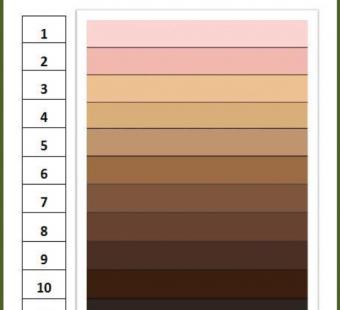
Ethnicity module color palette

Blanco

Indigeno

Mestizo

Mulato

Negro

Blanca

Indigena

Mestiza

Mulata

Negra
About Perla
In 2008, the Project on Ethnicity and Race in Latin America (PERLA) was formed in an effort to collect and analyze survey data to explore a wide range of ethnoracial issues in the region, providing much-needed data on ethnoracial conditions in the region. By designing nationally representative surveys on a broad range of ethnoracial issues, PERLA has gone well beyond the one or two ethnoracial classification questions found in national censuses and other official surveys. The PERLA surveys consisted of an ethnicity module included in the 2010 AmericasBarometer as well as in-depth ethnicity and race surveys in four countries: Brazil, Colombia, Mexico and Peru. The PERLA surveys include several ethnoracial classification and inequality items, questions on perceived discrimination, and public opinion questions about ethnoracial minorities, social policies, and social movements. Our analyses of these surveys provides new truths based on solid data for a region that has long been in denial about deep-seated ethnoracial inequalities, injustices, and prejudiced attitudes, not to mention the need for policies that seek to redress them.
PERLA spent two years designing the surveys and subsequent years dedicated to the analysis of PERLA data and the production of a book and several articles. With these, PERLA seeks to inform academic analysis, official and other data collection efforts, policy making, and public opinion in the region. In the four countries we analyze (Brazil, Colombia, Mexico, and Peru), like many others in the region, social movements of black and indigenous people now demand that they be recognized and included in national censuses. As many Latin American nation-states begin to democratize, political decisions can no longer be fully inattentive to their demands for recognition and social justice. Thus the time is ripe for rich empirical analyses that can inform academic discussions and policy making about race and ethnicity in many Latin American countries, although the extent of receptiveness varies among them. In particular, policy discussions, including those about the census and how to collect such data, have become increasingly common in Colombia and Peru. In Mexico, academic discussion have only just begun, and policies to redress ethnoracial inequality still seem out of reach. In the absence of ethnoracial data, such studies have been relatively scant in those three countries. But Brazil seems to have moved fairly quickly from socially denying racial discrimination to widely recognizing racism and working to reverse it, partly as a result of years of studies that directly challenged its racial democracy ideology.
With the PERLA surveys, we are able to empirically examine critical issues in race and ethnicity that cannot be assessed using available data sources. We pay particular attention to the factors involved in the formation of ethnoracial identities, the extent and nature of inequality and discrimination, the degree of ethnic inequality, and the nature of social relations across ethnoracial boundaries, all set within particular national contexts. We examine a wide range of methods for classifying race and ethnicity, from asking respondents various self-identification questions and using interviewer-classification, employing different category schemes; an innovative feature of our study for all countries is the use of a color rating by the interviewer. We are also interested in public opinion about ethnicity and race, including individuals’ experiences of discrimination against themselves or others, and their attitudes about black and indigenous social movements and policies that may alleviate ethnic and racial inequality and discrimination. We seek to examine these issues comparatively across the four nations and historically, asking what are the historical, political and social contexts in each country that gives rise to these manifestations? We pay particular attention to differences across ethnoracial groups, particularly afro-descendants, indigenous peoples, mestizos and whites and examine differences by skin color, which we measure in our survey using a color palette.
We invite you to examine our publications

The PERLA research team is made up of leading analysts of ethnicity and race in each of the four countries, along with the principal investigator who has worked extensively on Brazil. Moreover, PERLA collaborators represent the fields of sociology, anthropology, linguistics, history, and economics; in combination, they also cover the literature in English, Spanish, and Portuguese and engage each other on conceptual and empirical issues in the study of race and ethnicity, across national and linguistic boundaries.
The PERLA surveys are the first cross-national representative surveys of race and ethnicity in Latin America, as far as we know. Representative surveys like these are very important because of their fairly large samples and their ability to measure a variety of phenomena that can be generalized to the entire population. Surveys like PERLA’s with their agility are able to examine a much wider range of issues than censuses, including alternative forms of ethnoracial classification; this approach facilitates scholarly analysis, and yields both suggestions for policy making and ideas on improving census taking itself. Admittedly, censuses are valuable for providing information for entire populations and for small areas. But censuses are very expensive and logistically complicated, and they have only one or two questions measuring race and ethnicity – generally using ethnoracial identification.
At about the same time as the in-depth surveys, PERLA also added a short ethnicity module to the 2010 AmericasBarometer (LAPOP), which included a color palette in all the countries they surveyed in 2010 – a feature that has remained in their subsequent surveys. In eight countries, the 2010 AmericasBarometer also included several questions on racial attitudes, parental occupation ad perceived discrimination, which are analyzed in separate articles, which can be found on this website. These data are currently available and the in-depth surveys of four countries are available upon request.

